Tales from the Turf: Racing's Greatest Punters, Bookies & Underworld Legends
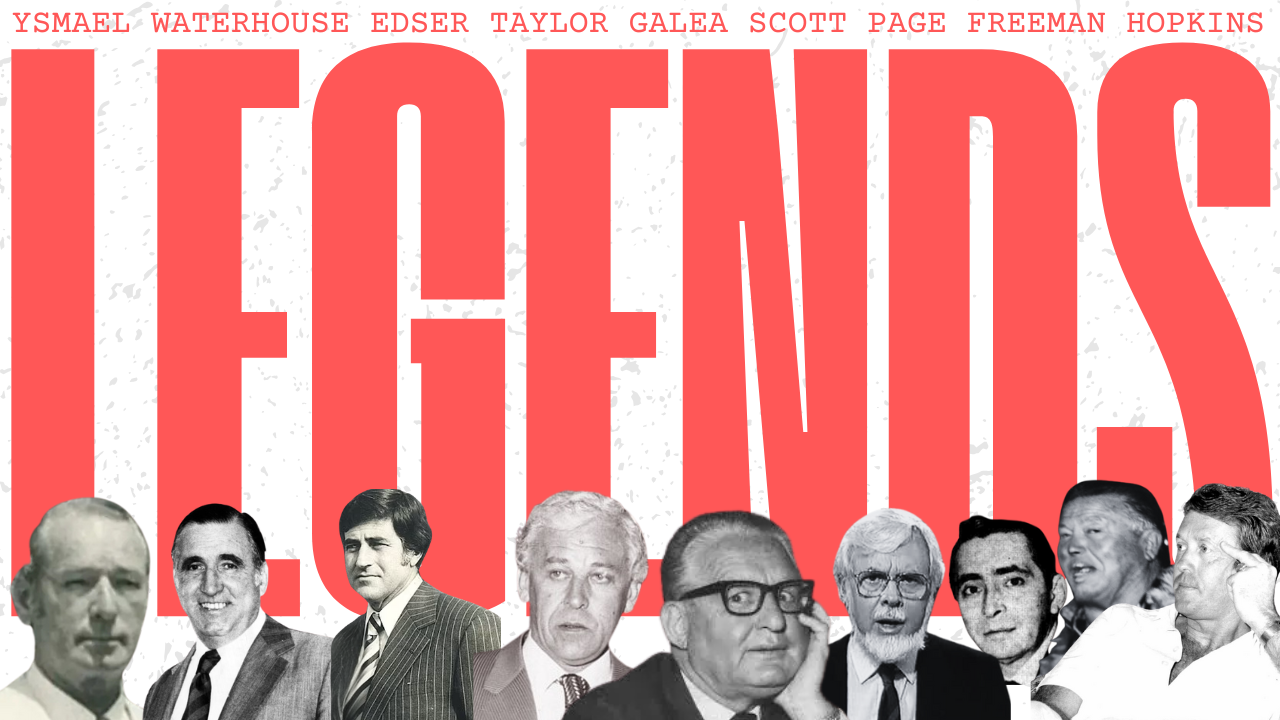
In the 1960s and 1980s, Australian horse racing was more than a sport — it was a high-stakes, high-society game played by colourful characters who bet and lived with a kind of reckless elegance we rarely see today.
It was a time where a man could walk onto the racecourse with a suitcase full of cash, lose it all by sundown, and front up the next weekend to compete again.
In a special episode of The Punt, Max Presnell and Adam Sparrow take us deep into that world — from the betting rings of Randwick to the glittering back rooms of Surry Hills, this was a time when money was made to be bet, egos were enormous, and myths were born on the turf.
Whether you're chasing sharp Horse Racing Tips, dreaming of Melbourne Cup 2025 Tips, or just aching for the stories behind the legends, this is your front-row seat to racing’s wildest days.
The Nine Punting Legends Who Shaped a Generation
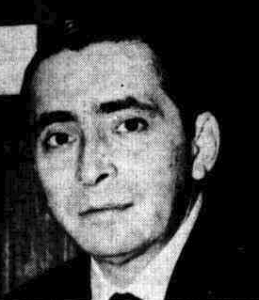
Felipe Ysmael – The Filipino Fireball Who Set Racing Alight
If Bill Waterhouse called him the biggest punter he’d ever seen, you’d do well to sit up and take notice. But to describe Felipe Ysmael as merely a punter would be like calling Kerry Packer a recreational gambler — technically true, but woefully insufficient.
Ysmael wasn’t just born into wealth. He was minted in it. Hailing from one of the Philippines’ most elite dynasties, his family's influence stretched from real estate and steel to presidential patronage under the notoriously corrupt Ferdinand Marcos. With business empires across Southeast Asia and $13.5 million USD in international loans secured on political favours, he didn’t spend money — he wielded it.
His early punting exploits began at Santa Anita and Hollywood Park during university, but the lack of bookmakers in the U.S. frustrated his appetite for impact. He tried his hand in the UK but found British bookies too timid and overtaxed. Then he discovered Australia — and set the ring on fire.
Ysmael’s arrival in the late 1960s was surgical. He employed respected bloodstock agent Frank Ford to assemble a powerful stable under the guise of an “Asian syndicate,” with trainers like Charlie Waymouth and Dick Roden on the books. He wasn’t just buying horses — he was buying position. Stables. Agistment farms. Even the hearts of bookmakers, who feared the storm that came with the yellow silks and black sleeves.
He wasn’t a “maybe this wins” type of gambler. On the 1st of May 1968, his agent placed $100,000 on a $350 Newcastle maiden race — and the horse won. That wasn’t madness. That was calculated warfare.
And yet, his most memorable charge wasn’t Silver Strike or Red Diver, but a regal chestnut named Always There. Bought for $13,650, Always There rattled off win after win before tragically being denied in the AJC Derby after a horror run. Redemption came at Flemington, where he stormed home in the Victoria Derby and backed it up with the Sandown Guineas.
But greatness rarely goes unpunished.
On December 21, 1968, a plunge on an unraced colt, Follow Me, ended in disaster. The horse flopped, the stewards opened an inquiry, and the VRC made a rare and ruthless call — Ysmael was disqualified for two years. His empire was humiliated, his ego battered, and he liquidated his racing assets in a fire-sale that saw Always There passed in despite a $300,000 bid.
From there, Ysmael’s arc turned tragic. Diplomatic games, failed comeback bids, and eventually a quiet death in 1984 marked the fall of the man once dubbed “The Filipino Fireball.”
He lost more on one race than most owners spend in a lifetime. But for a brief, blazing moment, he was the centre of the Australian racing universe.
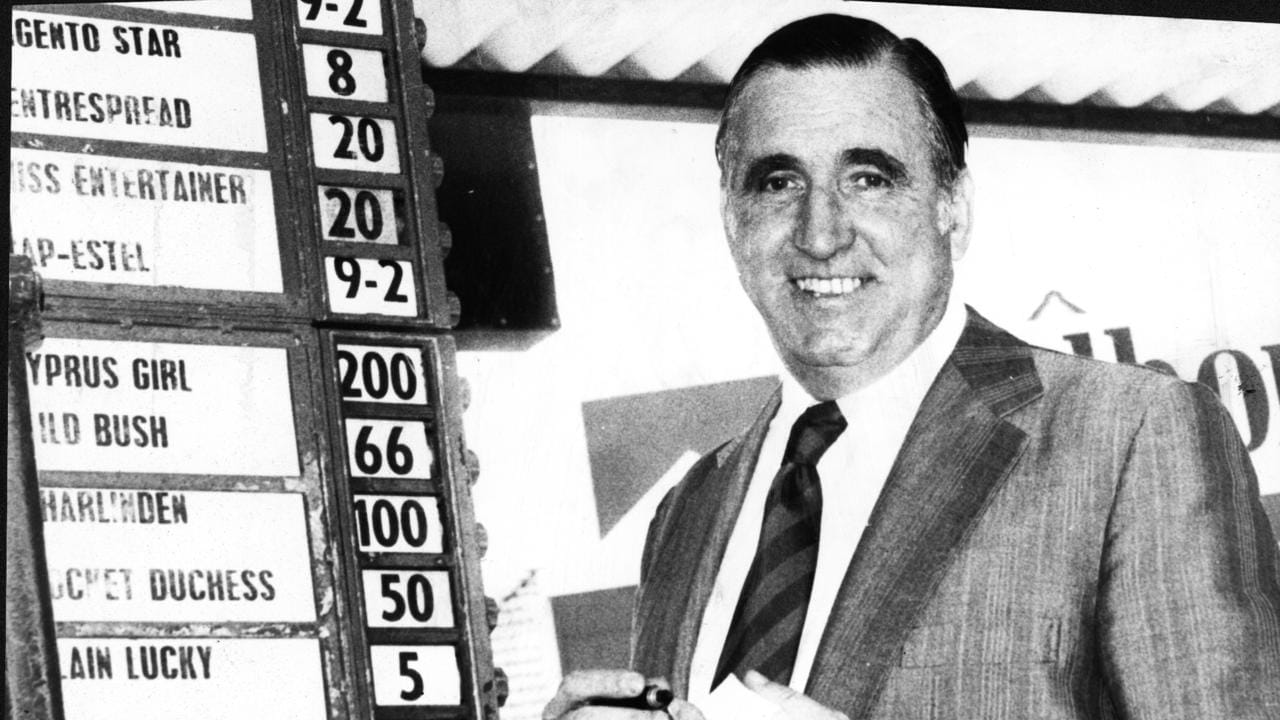
Bill Waterhouse – The Last of the Great Bookmakers
If punters like Ysmael were gods of fire, Bill Waterhouse was ice. Calm under pressure. Calculated. And courageous in a way only a man who once stood to lose a million dollars on a single race in 1968 could be.
But Bill wasn’t just a bookmaker. He was the bookmaker. The man who stared down Australia’s most feared punters — Ysmael, Huxley, Duval, Hopkins — and beat them all, not by running from risk, but by leaning into it.
Bill began fielding in 1954, but the Waterhouse bloodline ran deep — all the way back to 1898 when Charles Waterhouse opened the family’s first ledger. In time, the name would stretch across generations: his son Robbie, grandson Tom, and a marriage into racing royalty when Robbie wed Gai, daughter of legendary trainer Tommy Smith.
But it was Bill’s chapter that rewrote the bookmaker’s code.
“I beat them all, eventually.”
He didn’t just lay bets — he laid traps. Bill would often let pros bet “overs” deliberately just to harvest their information. If a big plunge came for a horse, he didn’t block it — he followed the scent, updated his book, and used the intelligence to crush the rest of the field.
That kind of nerve isn’t taught. It’s born.
Bill was known to lay 20 massive punters in one race. He didn’t just field odds — he fielded edge. He studied the psychology of punters. He mastered the art of value. His golden rule?
“Value must be married to form.”
Punters who lacked discipline, who backed everything they liked regardless of price, were, in his words, “doomed.” Even brilliant form assessors like Barry Terry lost to him because they took “unders” too often. “Eventually,” said Bill, “they all break.”
And yet, Waterhouse’s success was never cruel. It was clinical. He respected the game, its players, and its margins. While the racing media often cast punters as the romantic heroes, Bill Waterhouse proved that the man holding the bag could be just as brilliant, just as fearless, and just as much a part of racing’s folklore.
He believed the betting market — in all classes — was nearly always accurate. He admired professionals who formed teams to share responsibilities: one for weights, another for wet tracks, another for mounting yard intel. He even revealed he’d personally favour 2YO races for punting — where speed sorts the wheat from the chaff — and avoid stayers due to uncertain pace.
Perhaps most interestingly of all, the man who personified risk had one surprising motto for punters:
“Play up your winnings.”
There was no safer bet in racing than the man behind the big bag at the top of the ring. And when history writes the legends of the Australian Turf, the name Bill Waterhouse will be underlined in bold.
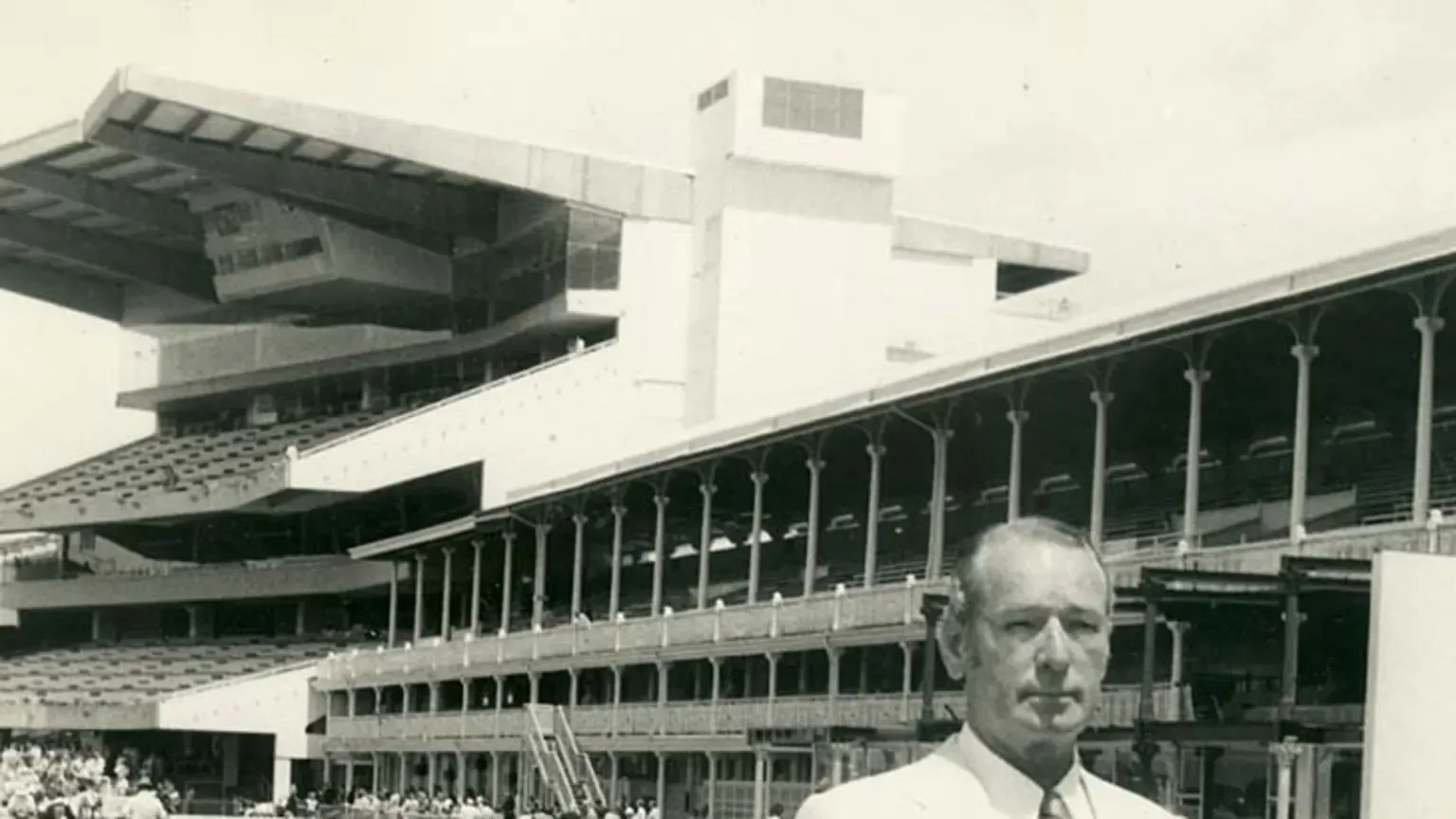
Hollywood George Edser – The Glamour Boy of the Ring
If Bill Waterhouse was the ice, and Felipe Ysmael the fire, then Hollywood George Edser was the lightning bolt: flashy, unpredictable, and always one roll of the dice away from either riches or ruin.
Born near Newcastle, Edser was betting like a pro at 15. After one hot run, a local bookmaker groaned, “You should go to Hollywood, George,” and the nickname stuck. He didn’t just accept the moniker — he lived it.
Impeccably dressed, he was known to change shirts mid-meeting. Handsome, tanned, and oozing charisma, he was as much showman as he was sharp. Think George Clooney with a betting ledger and a pocket full of hundreds.
“I’ve had £60,000 in the bank on Friday night and woken on Sunday morning with nothing,” he once said. “Money means nothing to me on the racecourse.”
And it didn’t. In 1953, he stripped bookmakers of £24,000 on Prince Morvi in the AJC Derby. In 1959, he hit again for £50,000 when Tudor Hill won the Doncaster. When he bet, he bet big — and bold.
But the glamour came with grit.
In 1958, two gunmen shot him at his Elizabeth Bay home. One bullet lodged in his hip. He survived, barely. “They meant to murder me and nearly succeeded,” he told the press.
In 1961, the AJC warned him off as an “undesirable.” It was the beginning of a long exile. He employed runners to place bets, often caught watching over fences or skulking through the long grass at Warwick Farm. His old partner in plunge, bookmaker Jack Large, was also rubbed out — the pair blamed for the infamous £72,000 knock.
“I’m the man who owes the £70,000 and can’t pay,” Edser admitted. “I did the lot in two days and I’m flat broke.”
Hollywood George went from Point Piper to Rose Bay, and eventually to court. In 1966, he received a suspended sentence after police found his stash of stolen booze. A judge called him “the middle-aged glamour boy of the Australian turf.” Even his downfall had flair.
He was finally reinstated in 1979, long after the bright lights had faded. He emerged from exile with a quote that summed up the heartache, hope, and madness of the great game:
“There are more heartbreaks in racing than hoof beats.”
You couldn’t write a better script. But maybe someone should.
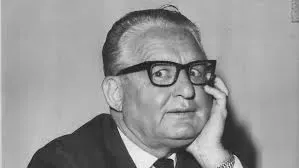
Joe Taylor – The Gentleman Godfather of Australian Gambling
Long before casinos were legal, Joe Taylor ran Sydney’s most prestigious — and illegal — gambling rooms. He dressed in red, bet like a king, and counted premiers, punters, and gangsters as mates. But it wasn’t power or violence that made “The Boss” legendary. It was the way he blended both worlds — crime and civility — into one seamless lifestyle.
Taylor took over Thommo’s Two-Up School during WWII, transforming it into the most infamous underground game in Australia. With 40 employees, backdoor police payoffs, and staged raids involving hired vagrants, Thommo’s became a symbol of how law and illegality danced together in post-war Sydney.
In 1949, Taylor opened the Celebrity Club, then the Carlisle Club in Kings Cross — high-end joints that served up baccarat, booze, and backroom deals. Red carpets, red ties, red walls. Joe’s lucky colour was everywhere.
But the man wasn’t just a gambler. He was a giver. Known to lose fortunes and then hand over more, Joe famously once won the Golden Slipper with his filly Birthday Card in 1962 — and gave away most of the prize money before losing the rest that day on another horse.
“Money is nothing but betting ammunition,” he said. “And it’s not worth having if you can’t give it to your friends.”
Bill Waterhouse once said,
“If the Bank of England was Joe’s bookmaker, it would be terrified.”
Joe served on the committee at City Tattersall’s Club, kept close ties with Premier Sir Robert Askin, Governor-General Sir William McKell, publisher Ezra Norton, and was often seen dining with police detectives and gangland figures alike.
His funeral in 1976 drew over 1,000 mourners — punters, politicians, priests, and crooks. Because Joe Taylor wasn’t just a racing man. He was the man. The walking paradox of Australian gambling: ruthless and generous, corrupt and respected, illegal and admired.
He didn’t just represent the golden age of off-course betting.
He built it.
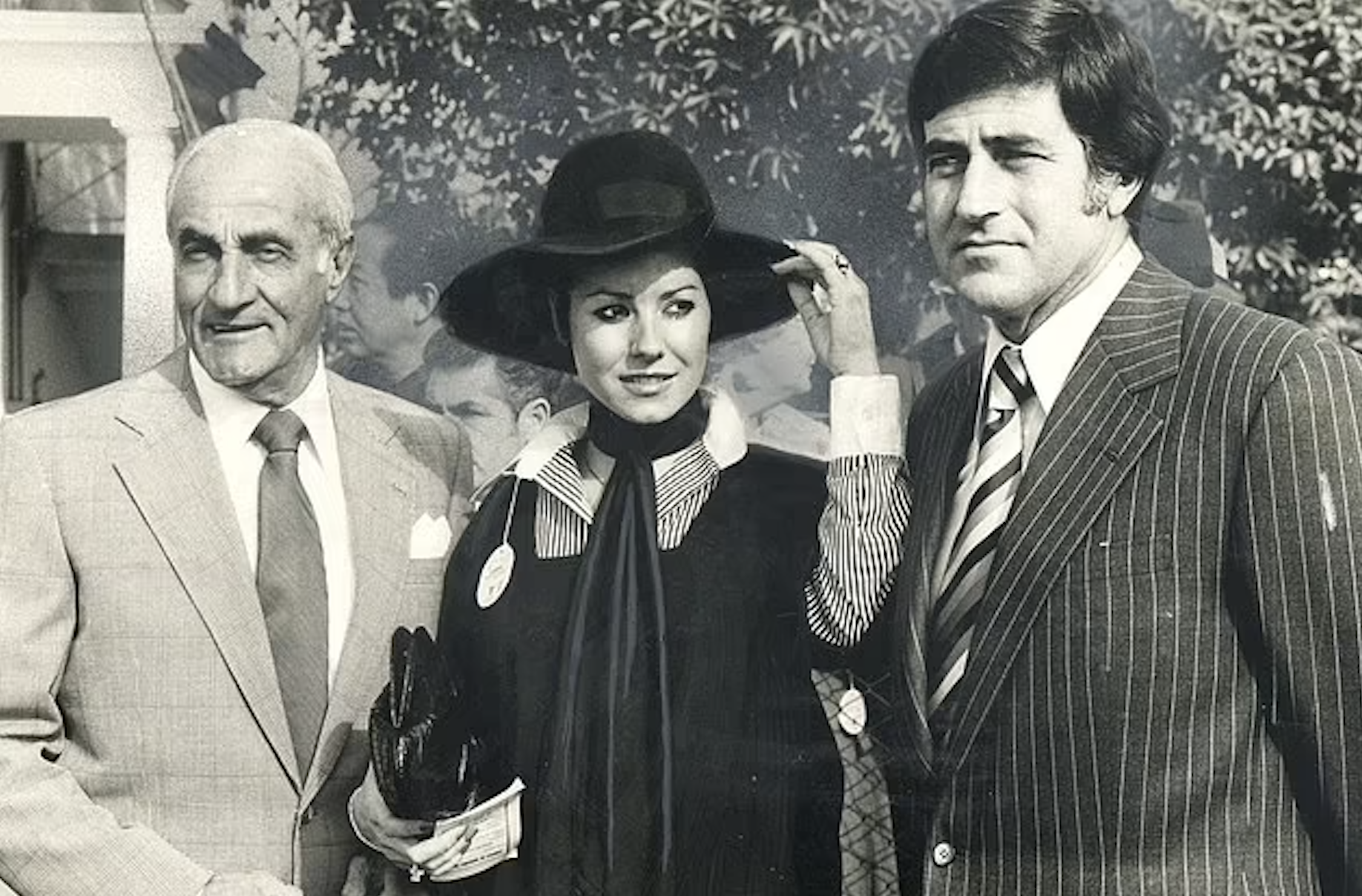
Perce Galea – The Prince of the Clubs and King of the Track
They called him “The Prince,” but he never needed a crown. Percival John Galea, better known as Perce, ran Sydney’s most lavish illegal casinos, bankrolled racehorses, bribed cops, and predicted Melbourne Cup trifectas on live TV — all while remaining one of the city’s most beloved punters.
He grew up in Woolloomooloo, started betting threepences at 14, and by the 1940s was running baccarat schools in Kings Cross with notorious underworld figures. In the ‘50s and ‘60s, he transformed Sydney’s gambling scene with operations like the Victoria Club, the Fountain Club, and most famously, the Forbes Club — where showbiz stars, politicians, and gangsters all rubbed shoulders under chandeliers and roulette wheels.
Security was tight. Bribes were routine. And the house always won.
By 1974, Galea’s Bridge Club in Double Bay boasted over 50 staff, six blackjack tables, five roulette wheels, and $2 million in weekly turnover. Everyone got paid — including the police, allegedly to the tune of $100,000 per year for senior officers like Premier Sir Robert Askin and Police Commissioner Norm Allan. Galea even joked about his “old mate” Ray Kelly, one of Sydney’s most corrupt detectives, at his 1966 retirement dinner.
But Perce was more than a crime boss. He was a racing identity. He loved the track, loved his horses, and was loved by punters. In 1964, when his colt Eskimo Prince won the Golden Slipper, he returned to Rosehill and showered banknotes over the crowd.
He was dapper, generous, and always ready with a tip. His prediction for the 1962 Melbourne Cup? He named the first three placegetters — in order.
For years, the AJC and STC denied him membership due to his casino ties. So he asked Premier Askin for help. Next thing you know, the gates opened.
He died in 1977, just two years after sharing a $200,000 Opera House lottery prize with his family. His Coogee garden featured a statue of a jockey — a tribute to the life he built from the turf.
His son Bruce carried on the family’s gambling legacy, running illegal casinos through the 1980s and ‘90s and famously serving over two years’ jail for refusing to talk to the NSW Police Royal Commission. He went in silent — and came out the same way.
Perce Galea’s empire of gaming, glamour and guile helped define Sydney’s underworld — but at the track, he was always just “one of the boys.” He bet hard, dressed sharp, and gave like a king.
“Adored by punters. Esteemed by the press. Feared by bookmakers. Respected by everyone.”
That was Perce.

Don Scott – The Professor of Punting and Ratings Revolution
He didn’t carry a revolver, run a club, or owe a bookmaker a cent. Don Scott’s weapon was logic. His playground? The betting ring. His legacy? A system that changed punting forever.
A former dux of North Sydney Boys' High and a law student who dropped out to pursue the punt, Scott was unlike any other figure in racing history. Where others relied on whispers, Don built a fortress of mathematics. In the 1960s and ‘70s, as flashy plungers made headlines, Scott quietly launched an offensive of his own — methodical, relentless, and devastatingly effective.
He called it value betting.
He didn’t bet on hunches — he bet on edges.
Don was the architect behind the famous Legal Eagles, a syndicate that included Clive Evatt and Bob Charley. Together they attacked bookmakers like traders attack markets — pricing every runner, calculating overlays, and staking to profit, not pray.
Later, disillusioned with the grind of win betting, he pivoted to trifectas. Why? Because that’s where the mug money lived — and where his brain gave him a bigger edge.
“Most punters bet blind,” Scott said. “They don’t understand value. They don't understand probability. And they lose faster chasing the dream of the exotic.”
But Scott did. He lived in an office in his North Sydney home, working 12 to 14 hours a day, seven days a week. Watching replays. Studying photos. Eliminating races with fewer than 10 runners. And betting trifectas based on calculated true probabilities — not gut instinct.
He taught that small punters should not bet trifectas.
Instead, he told them: “Bet on-course. Bet to value. Grind a 5–10% edge. And don’t expect glamour.”
Don’s writing in Winning, Winning Ways, and Winning More became scripture. He demystified how bookmakers create prices. He taught generations of punters how to price horses using weight, class, and time. He explained how field size affects value, how bookmaker percentages work across capital cities, and why taking unders is the cardinal sin.
“You cannot win without value,” he said. “You may as well hand your wallet to the bookmaker.”
He was the first to show that punting wasn’t about tips — it was about math. Don didn’t drink with jockeys. He didn’t text trainers. He stayed alone. Pure. Cold. Brilliant.
Scott passed away in 1996, but every modern ratings system, every data-driven syndicate, and every punter trying to “bet to 80% books” owes him a debt.
He turned punting into an intellectual art.
And in doing so, gave punters a fighting chance.
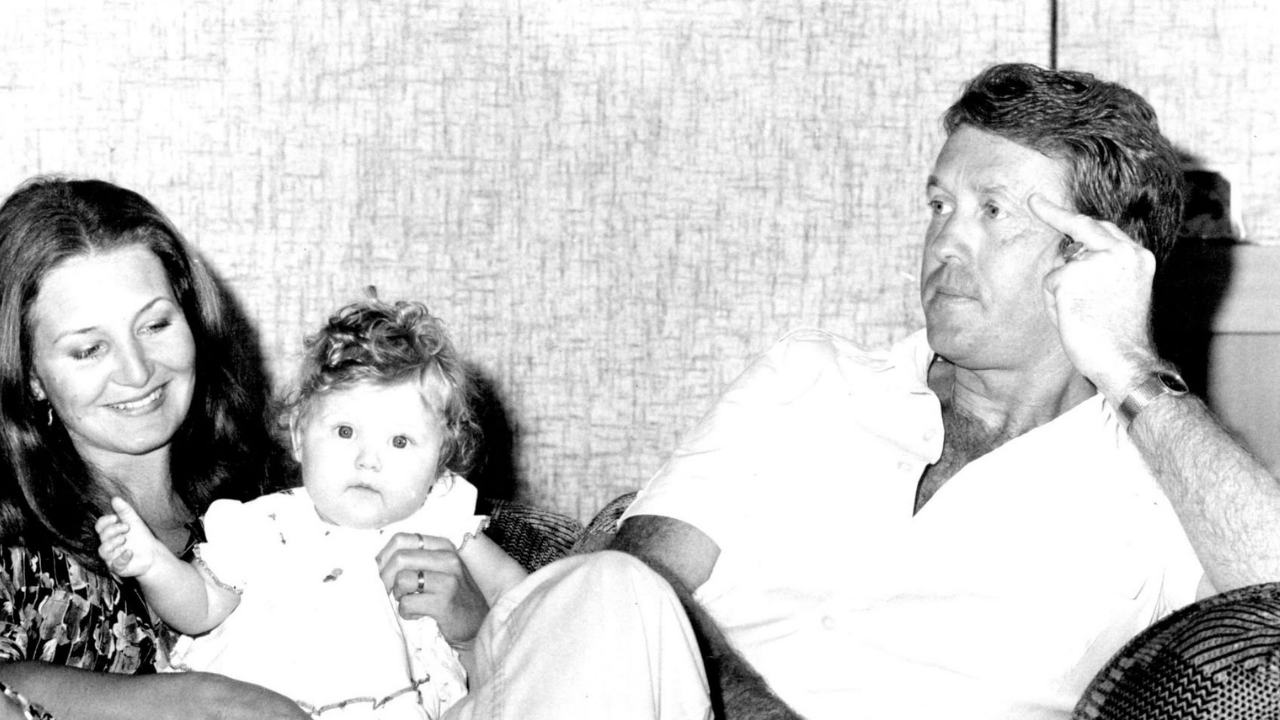
Terry Page – The Quiet Kingmaker of Coogee Bay
He wasn’t the flashiest figure on course. He didn’t get shot at, or throw money from a Rolls. But if you stood behind Terry Page in a betting ring or a boardroom, you knew one thing: the man didn’t miss.
Page rose through the bookmaking ranks in Sydney during the 1970s and ‘80s, carving a reputation as a shrewd, calculated player — a man with nerves of steel and a Rolodex full of clients. But it wasn’t just his willingness to lay massive bets that made him legendary — it was his ability to stand firm and win.
“He wasn’t flamboyant like Hollywood George,” said Adam Sparrow. “But Page found the clients. They gravitated toward him. And when he let them on, they usually lost.”
His greatest coup, though, may have been off the track. In 1973, Terry Page bought the Coogee Bay Hotel from Kathleen Munro (widow of champion jockey Darby Munro). And from that quiet coastal pub, he built a cultural empire.
Under his ownership, Selina’s Nightclub — reportedly named after his daughter — became one of Australia’s premier rock venues. From the 1970s through the ’90s, Selina’s hosted the likes of INXS, Midnight Oil, Crowded House, Cold Chisel, James Brown, and Nirvana. Meatloaf once drove a motorcycle onto the stage. Bob Geldof held court. Flannelette shirts, Doc Martens, and rockabilly pompadours turned Coogee into Sydney’s answer to Haight-Ashbury.
Page’s business empire blended racing, real estate, and rock ’n’ roll in a way no one else had managed. He didn’t crave the limelight — but he controlled it.
“He had that quiet confidence,” Max Presnell recalled. “It was his kingdom. No one ever said a bad word to him at the races.”
While he let others handle the form — including a young Dominic Beirne, who cut his teeth doing ratings in the Coogee Bay’s back office — Page focused on one thing: letting the right punters on, at the right price.
He backed Sheena Easton to play Selina’s simply because he liked her song. And he laid bets that would terrify a modern corporate bookmaker. Page didn’t get lucky — he built his fortune brick by brick, bet by bet.
By the 1980s, Terry Page was as well-known in Sydney as any bookmaker or businessman in the country. Quietly wealthy, deeply respected, and eternally in control, he embodied a different type of racing identity: understated, but unmistakable.
He didn’t need a nickname.
He just needed the price — and the edge.
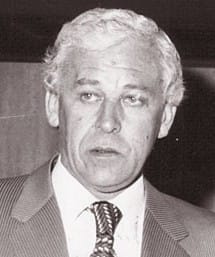
George Freeman – The Fixer in a Fedora
To the public, he was a “colourful racing identity.”
To the underworld, he was a boss.
To bookmakers? He was a problem they couldn’t solve.
George Freeman cut a sharper figure than most gangsters — tailored suits, silk ties, and a mind like a knife. Born in Annandale in 1935, he was a shoplifter by 12, a gaol inmate by 16, and an SP kingpin by 30. He rose through Sydney’s criminal ranks not by brawn, but by blueprint — equal parts menace, manipulation, and market control.
Freeman made his fortune in SP bookmaking, running a sophisticated phone-betting empire with dozens of agencies across Sydney. He set odds, took bets, and paid police — all from his Rockdale office, complete with intelligence staff, lines of runners, and collectors who enforced with tomahawks if necessary.
He didn’t just run bookmaking — he ruled it.
“If the Bank of England was his bookmaker, it would be terrified,” one punter quipped.
But that was just the start.
He moved into illegal casinos, shook down operators with McPherson, and paid everyone from bent detectives to magistrates. Murray Farquhar, the Chief Magistrate of NSW, sat beside him at Randwick. So did Dr Nick Paltos — later jailed for drug smuggling. His ties to mobster Joe Testa saw him hosted in Chicago and investigated in Sydney. He was named in nearly every Royal Commission from 1973 to 1986 — and yet, after 1968, was only ever fined for SP betting.
His power was real. His trail was clean.
Because he ruled by fear.
“No one ever gave him up,” said Merv Beck. “He was never there. He was always three or four people removed. And no one talked.”
In 1979, someone tried to kill him — a bullet in the neck. Theories swirled. Was it revenge from a failed associate? Was it Freeman sending his own message?
He denied everything. But his reach remained untouchable.
George Freeman’s love for racing never waned. He owned horses, tipped the trifecta on TV, and held court in the betting ring like a made man at a country club. His autobiography, released in 1988, was more confession than explanation — full of charisma, light on detail.
He died in 1990 from heart failure. He was 55.
Freeman wasn’t a villain out of Hollywood. He was the real deal. Strategic. Untouchable. And in a game of outlaws and odds, he always played the percentages — and played them well.
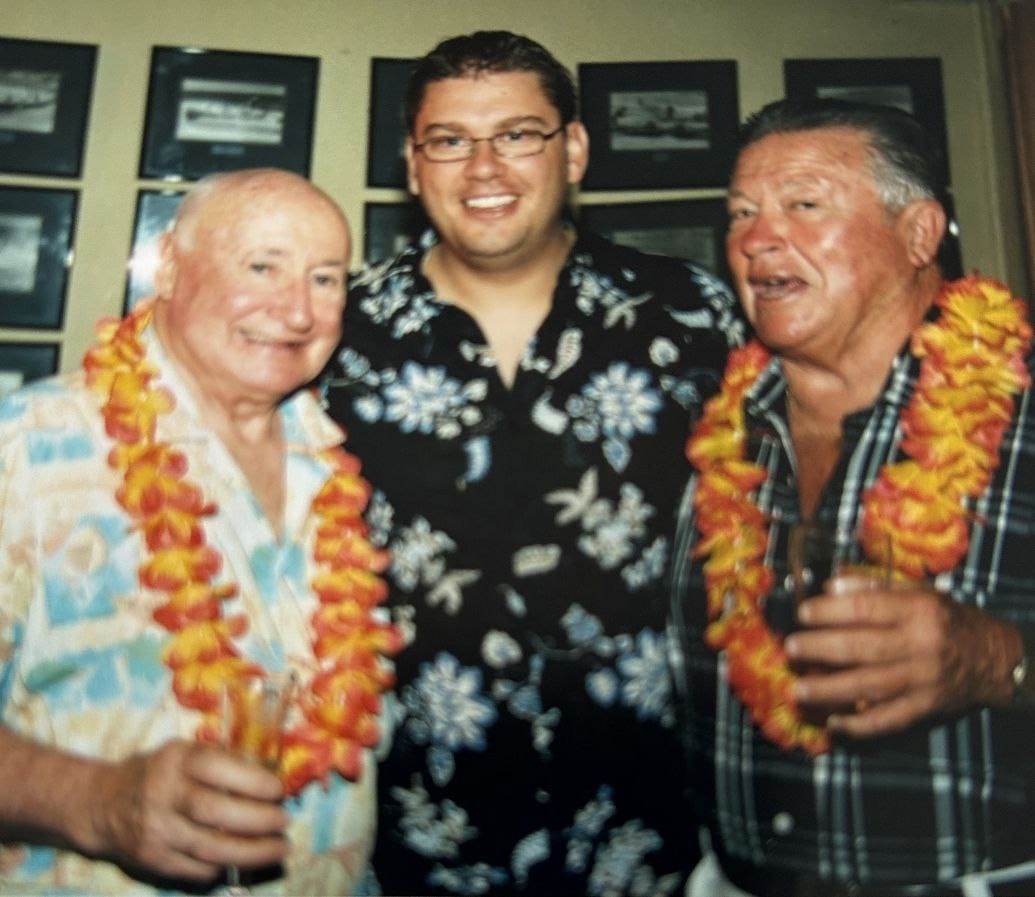
Ray Hopkins – The Biggest, the Best, and the Most Desperate
In the world of high-stakes punting, there are many who burned bright — but only a few who burned through everything in sight. Ray Hopkins was one of those few. If you asked the men who stood beside the ring in its golden age, many would name him as the best of the lot.
“The best punter in my time was Ray Hopkins,” veteran bookmaker Col Tidy once said.
“He was the biggest, the best, and the most desperate.”
Hopkins wasn’t just a big fish — he was the whole ocean. He got on for mammoth amounts, both on course and off. When he was behind, he doubled down. And when he chased, he didn’t nibble — he launched.
What made him unique was the scale and speed of his bets. If the SP price was too skinny, he’d plunge at the track to make it shorter himself. He played both ends of the market — controlling the tote and the narrative. And when he liked one, he backed it to win, not to dream.
Known as part of the legendary “B.A.S.H. crew” — a rumoured acronym for Bricknell, Abrams, Stollery, and Hopkins — he was the last of the pure-blooded punters. No models. No algorithms. Just an eye for horses, a feel for the market, and a stomach for risk most couldn’t imagine.
“He would get on a losing streak and bet up bigger and bigger,” said Tidy. “No one chased like Hopkins.”
Ray was the kind of punter that bookies respected, feared, and quietly admired. Not just for his courage — but for his consistency. He didn’t need to talk. His betting slips told the story.
Today, punters talk about models, markets, and minute overlays. But Ray Hopkins came from a time when men bet with feel, flair, and fire.
And when the bell rang?
He was always ready to go to war.
More Than a Bet: Two Economies, One Life
In the words of the insiders:
“There were two economies — the one you used for groceries and the one you used for betting. And they were completely separate.”
Fortunes were won and lost in hours. Racecourse legends like Jack Sparrow would win £100,000 in a week and spend just £7,500 on a home — keeping the rest for the punt. Some never owned more than one house, not because they couldn't afford it, but because they saw no point. The race was everything.
From SPs to Syndicates: How It All Changed
The 70s and 80s saw the rise and fall of Sydney’s underground clubs — glamorous illegal casinos, exclusive two-up schools, and secret betting rooms where millions changed hands under neon signs and mirrored ceilings. It all eventually gave way to the rise of technology, regulation, and syndicate punting.
Don Scott’s form theories became the blueprint for Zjelko, David Walsh, and other syndicates that now churn through terabytes of racing data instead of whispers from stablehands. The betting ring became digital. The characters faded into folklore.
The Legacy Lives On
If you're looking for Horse Racing Tips or an edge for your Melbourne Cup 2025 Tips, don’t forget the stories. Every modern model, every betting strategy, every market movement still echoes with the DNA of these larger-than-life figures.
They lived for the punt.
They bet like kings.
They lost like legends.
And they left behind tales that money can't buy.
🎯 Want the best Horse Racing Tips for Melbourne Cup 2025?
Join the new generation of punters who live by the lessons of the old. Trackside, online, and always one step ahead.
